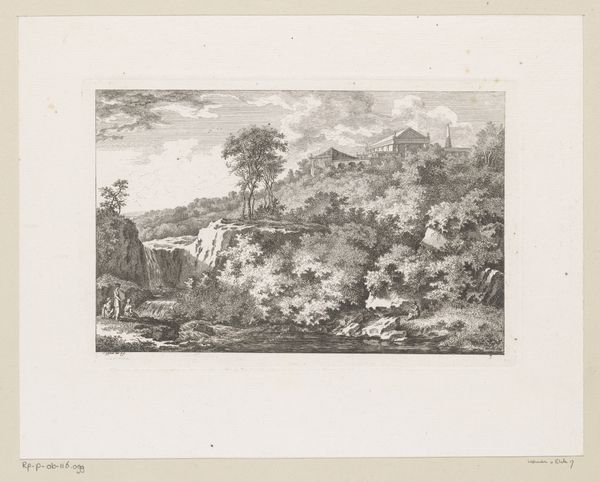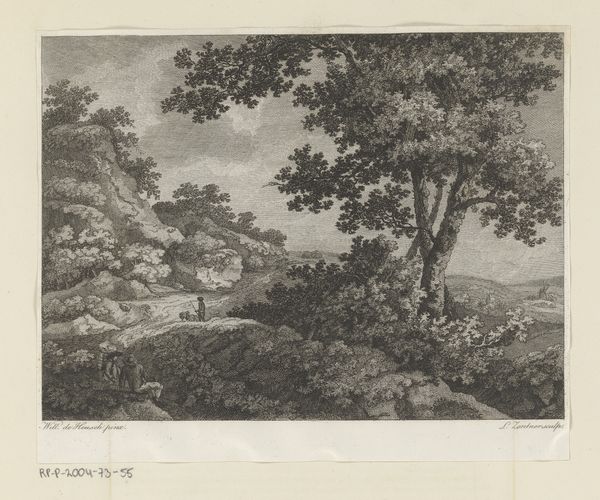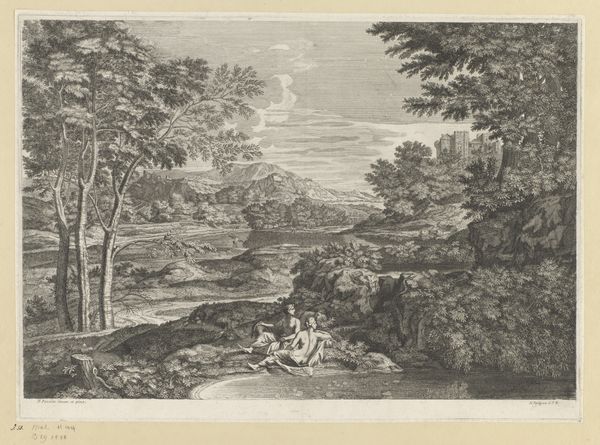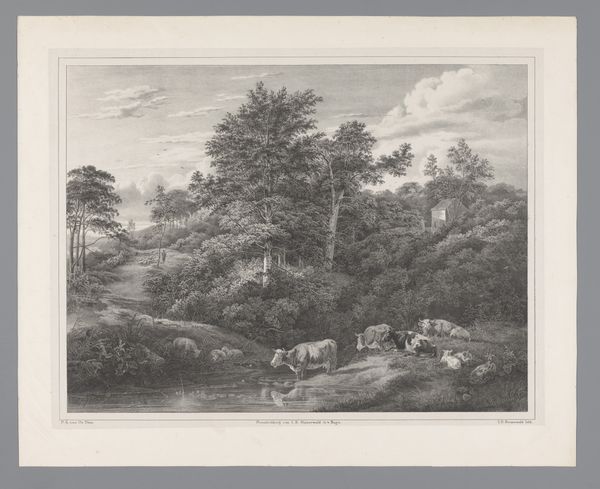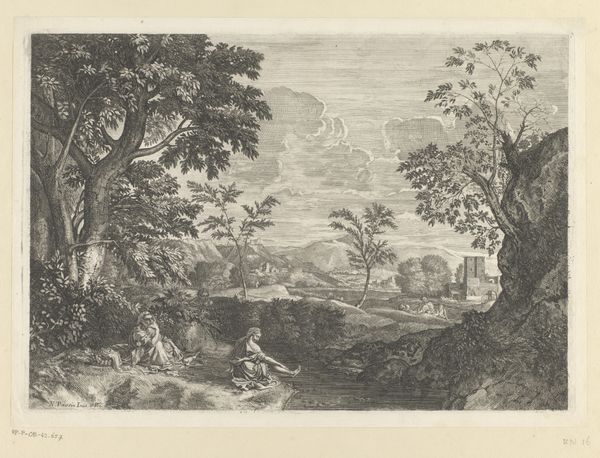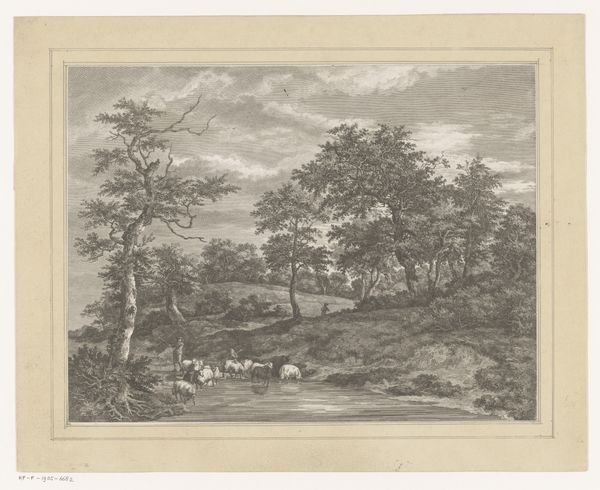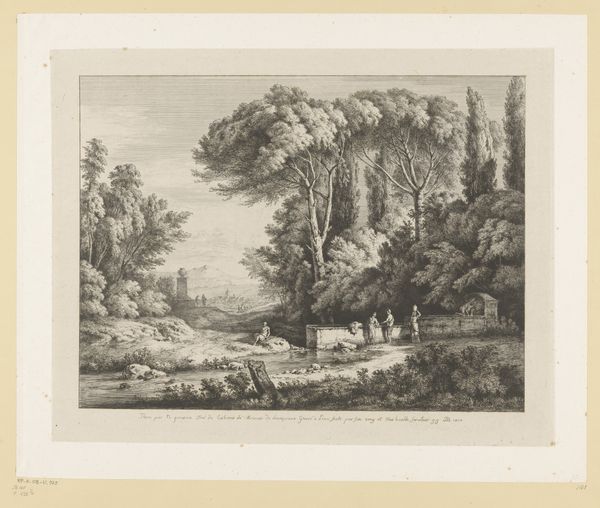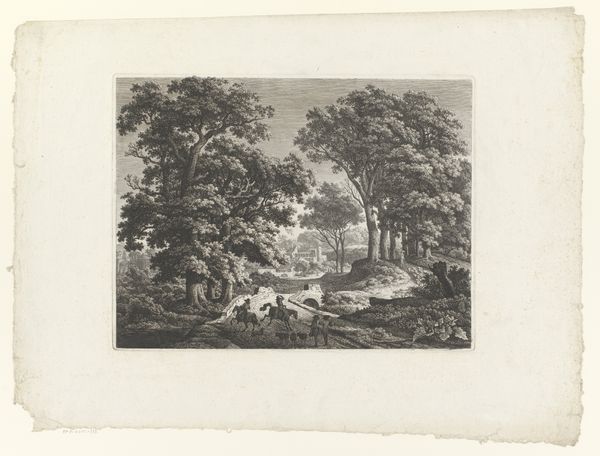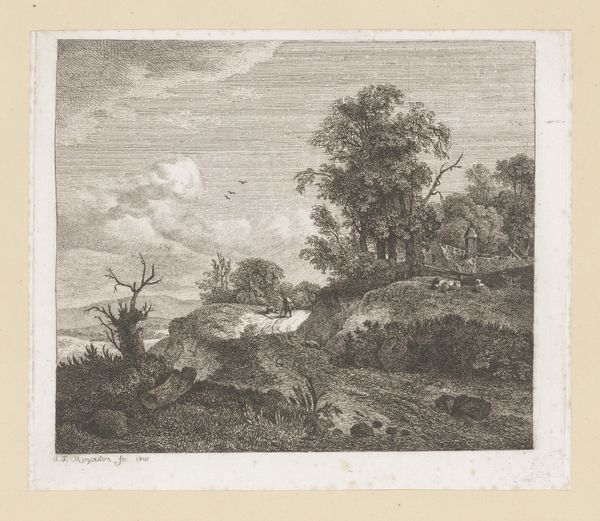
print, woodcut, wood-engraving
# print
#
landscape
#
woodcut
#
france
#
wood-engraving
#
realism
Dimensions: 6 1/8 x 9 5/8 in. (15.56 x 24.45 cm) (image)8 5/16 x 11 1/4 in. (21.11 x 28.58 cm) (sheet)
Copyright: Public Domain
Curator: This print, created in 1867, is titled "Animaux antédiluviens à Sydenham." It's a woodcut, or perhaps a wood engraving, showcasing prehistoric animals. The Minneapolis Institute of Art holds it in its collection. What's your first take on it? Editor: The overriding sensation I have when I look at it, is that it's deeply melancholic; the slumbering prehistoric animals give a powerful atmosphere of nostalgia for something that can’t be grasped or touched. Curator: Interesting. The print illustrates dinosaurs exhibited at the Crystal Palace Park in Sydenham, a suburb of London. After the Great Exhibition of 1851, the Crystal Palace was moved and re-erected there, with Benjamin Waterhouse Hawkins creating these now-famous dinosaur sculptures in the park. So, the piece itself is a monument to an exhibition. Editor: The symbolism is intriguing! Waterhouse Hawkins’ models would’ve represented the most advanced scientific understanding of extinct creatures at that time. To viewers, what feelings might those figures evoke when the print renders these huge, reptilian shapes dozing so peacefully? Perhaps these placid representations were reassuring for a Victorian audience grappling with Darwinian ideas of extinction? Curator: Absolutely. This image participates in a broader visual culture around science, progress, and empire. It was commissioned in a period when representing history accurately was a growing source of popular fascination, and indeed income for artists, publishers and museums. Editor: I notice too that the stillness gives it an air of permanence—the image almost feels iconic, as if it has always existed. A strange tension given it depicts a theme of deep geological time, and change. The very stillness becomes a way of reckoning with, and I think, containing that thought. Curator: Well, the Crystal Palace itself, after all, was intended as a monument to human achievement, a statement of Britain's industrial and cultural dominance. To imagine a world of dinosaurs domesticated to the scale of public park statuary speaks volumes about this self-image. Editor: And that is how visual culture processes ideas that would otherwise be destabilizing. Through symbols, anxieties become claims, or in this case, a public display. Curator: This print provides us a means to reflect on both the spectacle of progress, and its ideological underpinnings. Editor: The imagery shows us the power of collective visual imagination when grappling with these grand subjects. Thank you for pointing that out!
Comments
No comments
Be the first to comment and join the conversation on the ultimate creative platform.

